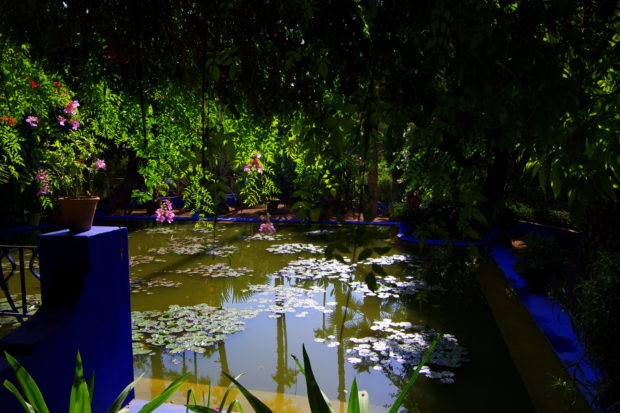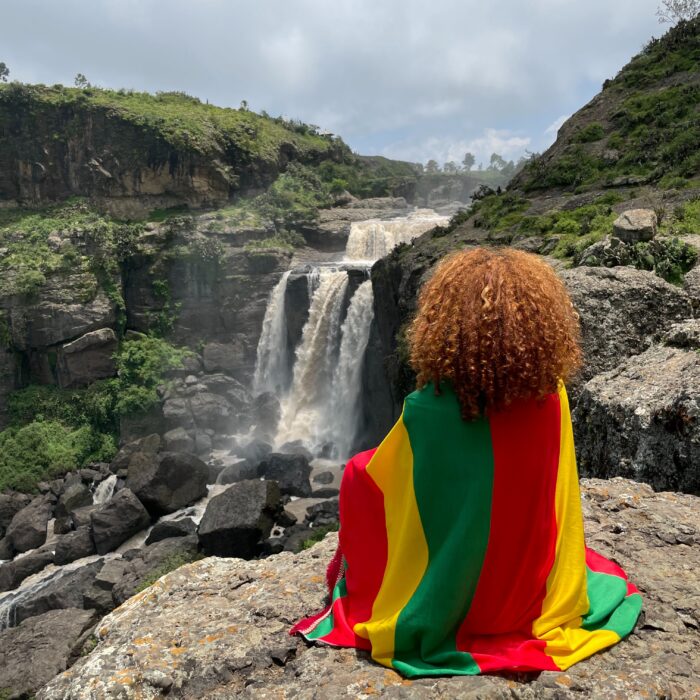You have no items in your cart. Want to get some nice things?
Go shopping
The Artist tenderly drew up plans to create a luscious place of meditation in the city; a living temple dedicated to elegance and serenity. A place of tranquillity, and of dynamic energy. He consecrated the earth as temple, cathedral, mosque, gurdwara, church, garden.
He sent the tall date palms soaring as supporting pillars to hold up the blue sky, just as Atlas had held the heavens on his shoulders. The high ridged cacti rose as trilling organ pipes, their music in the birdsong and the rush of the cleansing water. A choir of bamboo stood to channel their sentinel essence upwards as a soft babel of voices, languages entwined, continuously tumbling and flowing through the cool air in never ending praise. Fonts of blessed water flowed languid and elegant, then rushed into falling cascades. Energy changing from yin to yang, from peace to action.
The Artist made the exuberance of flowers – pink, scarlet, lemon, orange – the stained glass windows of this temple, sunlight dappling on the planes of colour tumbling from the green shadows.
The splayed fronds of the smaller palms became the devoted hands of the congregation, held high in praise to the sky: open to receive blessing. And trembling, they applauded the graciousness of this green temple. The scents of the damp earth, of the water, of the flowers, a dynamic incense, raising the senses above the mundane: perfume of the soul.
He created no walls, only screens and drifts of leaves. The leaves – green – were not all the same in their greenness. Some were fat and succulent, glossy in their satisfaction. Some were dry and papery, whispering meditations to each other. Others were pale and silver, barely green, yet could be no other colour. It was their very essence of leafness which drew them together in a multitude of the one garland.
Decades passed, and the Artist was gone. The hot desert winds sought to create a ruin of this holy place. People’s hearts turned away and they forgot. A Man of Cloth came seeking inspiration in a new land. He saw the garden and at once knew it for what it was. In the stilted wilderness he heard the echo of the Artist through the decades.
He knew that to plant a tree – never to see it reach maturity – is to acknowledge one’s own mortality. It is an expression of hope for the future, and love for the unseen generations to come. Planting a tree brings strong emotions, acknowledging both our primal connection to the earth, and our desire to soar on murmuring wings. The Man of Cloth began to sew the fragments back together.
This green temple grows in the heart of the city, yet the city can only enter with bowed head, submissive to serenity. The statuary of yellow, orange, blue pots bring people to their knees amongst the heady foliage. The blue house is an ode to the simplicity of spirit, dwelling within the intensity of pure colour. It is made only of solid colour, an actuality of pigment drawn from the very earth itself. To stare at such naked passion is to be lost in the universe, each sense in exultation, lost in the very essence of colour, pure in form and light.
This living temple nurtures the sparrows and the doves which brush the air with gentle love. Bees and insects keep it clean and fertile. They are the gardeners. The goldfish, in their sun-sparkled serenity, are the beating heart, the assurity of this unexpected life force nurtured in this green space. Their gold and scarlet uniforms are innocent, celebrating their freedom to be themselves. They are the guardians of this place. In the garden, the cultures of this world are drawn together. Oriental. European. Arabian. African. All distilled together like the perfume on the veiled skin of a woman.
The Artist and the Man of Cloth are now both now gone from this place, yet they are everywhere in this green temple in the city.
The Artist and the Man of Cloth. One took the living elements and saw his vision rise from the dry dust, sowing the seeds with a vibrant palette. He had to leave his vision of creation in trust to the harsh mercies of that place. The other rescued the living temple from the encroaching sand, and stitched it back together. Two creators, the Artist and the Man of Cloth, painting and stitching a living temple in the heart of a desiccated land. Their faith was in life, and all are welcome to worship here together.
As ever in a temple – as in all of the quietly spiritual places of this world – some people can only march through the aisles, briefly gazing at the forms through glassy lenses which click and whirr and flash, only reflecting back on themselves. These people talk too loudly, they disrupt the prayerfulness of the serenity of the garden, but only for a moment. They can never destroy it. When they move on, they are lost and the elegant, fertile tranquillity returns to our senses – it never went away. These empty chattering souls are to be pitied, to be embraced. Some day, their unquiet hearts will be stilled by a colour, a scent, an arabesque line of a leaf. Then they will recognise their own true selves in peacefulness of spirit, and they will then smile that secret smile which the rest of us share: the smile which sits on the forehead.
No one can ever really leave this place, can never walk away back to old lives. Part of us is still in the temple, and the temple is within us.
In Arabic, there is a word for a garden: it is Paradise.
The Jardin Majorelle in Marrakech, created by Jacques Majorelle (The Artist), and saved from destruction by Yves St Laurent (The Man of Cloth).

About Ailsa Thom
Ailsa has travelled extensively in South America and Africa. Now living back in Scotland, she spends the free time between working and writing trying to tame the garden, and firmly believes that going salsa dancing is equivalent to a trip to the gym. Ailsa has had work published in Litro, McStorytellers, Myslexia, Flash Fiction Magazine and The Ghost Story. She writes the travel blog enroutetonowhere.wordpress.com




